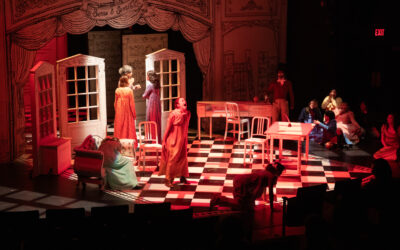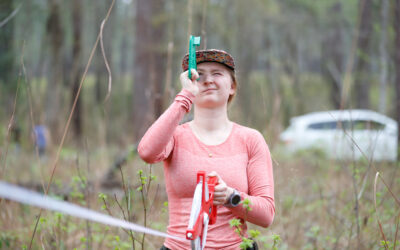
CA students and teachers will soon set out on a pilgrimage along a portion of the Camino de Santiago in Galicia. Others have made pilgrimages here in New England and around the world.
On June 8, Concord Academy students and faculty members will embark on a trip to Spain to walk a portion of a centuries-old pilgrimage route to the city of Santiago de Compostela in Galicia. During the first week of the program, students will stay with local host families and take classes in language, culture, and the history of the Camino at the University of Santiago de Compostela. During the second week, the group will walk 155 kilometers along the Camino Francés, experiencing firsthand what it is to be modern-day pilgrims.
CA Spanish teacher Adam Bailey describes walking the Camino as a particularly Spanish experience. “Walking from one refugio or albergue to another, you meet people from all over Spain, and the world,” he says. “You use your language skills in an authentic way.”
Travelers have followed the Camino since the Middle Ages, but the route surged in popularity after Pope John Paul II arrived in Santiago as a pilgrim in 1982 and, more recently, following books about the pilgrimage by Shirley MacLaine and Paulo Coehlho and the 2010 movie The Way. Bailey also attributes a recent increase in pilgrims along the Camino to the ease of international travel today and to cultural shifts that have left individuals looking outside of established religion for meaning. “Our society is searching for how to reconnect in a different way,” he says.
Bailey has walked the Camino — all 500 miles of it — before, for the first time in 2004. He and his wife also walked it together right before their wedding. During his sabbatical this summer, he’ll be working on a book he is writing about those experiences. He’ll travel with the CA group again in an unofficial capacity in June, but while he’s in Spain he’ll focus on spending time with his 13-year-old son as they check out alternative Camino routes for future CA trips.
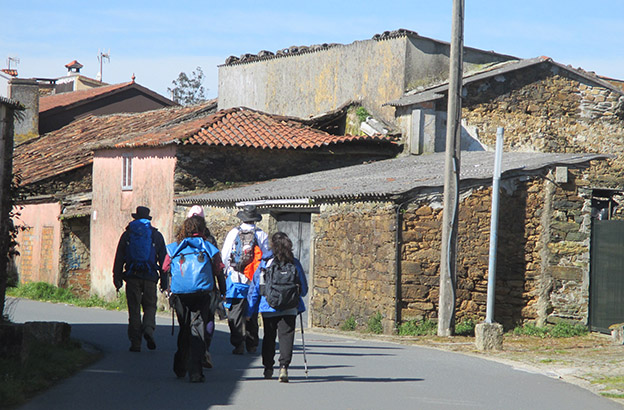

Left: The CA pilgrims in the home stretch of their journey on the Camino de Santiago. Right: Fearless leaders of the pilgrimage, Spanish teacher Adam Bailey and English teacher Nancy Boutilier.
A strong believer in the value of exchange programs for students, Bailey found that the model of exchange with Spanish families that he first attempted after coming to CA in 2012 limited boarders’ involvement. Because the CA students who did participate were driven academically and heavily involved in activities — a cultural mismatch for the Spaniards during their visits to the U.S. — he began to consider the Camino as natural way for students to become immersed in Spanish culture. He reached out to the university in Santiago to create the trip that CA students experienced for the first time in March 2018.
Bailey is attentive to framing pilgrimage as more than just walking from place to place. “It’s a mindful way to slow down, to minimize,” he says. “It’s what you learn along the way, what you’re paying attention to, and what you’re not paying attention to. You have just what’s in your backpack, and you’re aware of your body, your knees, the blisters on your feet. Pilgrimage helps you to appreciate the comforts you have, but also to see what those comforts usually keep you from experiencing.”
For Ethan Johnson-LeComte ’20, who participated in the trip last year, when it was offered during spring break, and has worked all year to save up money to return this June, the adversity was part of the reward. “Waking wasn’t the appeal,” he says, “but the opportunity was too good to pass up.”
“Pilgrimage helps you to appreciate the comforts you have, but also to see what those comforts usually keep you from experiencing.”
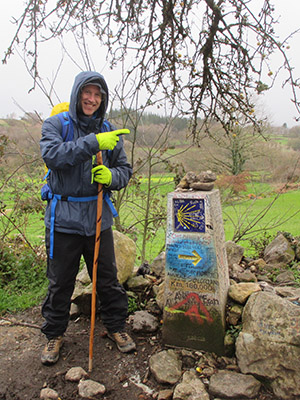
The experiences of and trudging through a hail storm on the trail and fortuitously meeting a group of Spanish students mingle in his memories. “I really enjoyed the independence we had,” he says. “I was trusted, and I appreciated that.” He says the time spent walking the Camino with his friends made them closer. He found the experience reflective, and he appreciates the structure that CA English teacher Nancy Boutilier, who accompanied the group last year and will lead it this June, provided every evening for students to journal.
Boutilier, a poet, writer, and artist, is intently focused on observation. “Anything I do is to help the students look more closely, listen more carefully, walk more slowly, and take time to sit with something,” she says.
In the mornings on the trail, she would huddle the students, reading them a quote about walking — something by Rebecca Solnit or Henry David Thoreau — to mull over throughout the day. Though she was met with a few grumbles the first evening she asked the students to free-write, by the end of the trip last year, the group had decided to hold an open mic, and Boutilier recited a slam poem about the Camino that the students had challenged her to write. “I do what I ask them to do,” she says. “I learn with them.”

Nancy Boutilier with the record of the completion of her walk on the Camino.
A self-described “seeker” and avid outdoor explorer, Boutilier has made a family pilgrimage along the Offa’s Dyke Path that borders Wales and England; she has hiked the Wonderland Trail that encircles Mount Rainier and the Timberline Trail around Mount Hood. “Every summer, it’s powerful to have a time with no cell service, to let my feet carry me and have everything I need on my back,” she says. “On one level, I’m looking for what is out there, but I also thrive on the solitude, the rhythm of walking, and a sense of just being. I prefer hiking places that are a little popular, because as you come upon and pass and are passed by others, you meet people in so many different ways.”
Preparing for this year’s trip, Boutlier has been learning more about urban sketching, to add a visual component to the writing she’ll ask of students.
“I encourage them to see the walk as a chance to think about what they’re looking for in life.”
– Nancy Boutilier
“One of the big questions from last year was ‘what does it means to be a pilgrim?’” Boutilier says, noting that for many students who came up in the U.S. education system, it’s hard to dissociate the idea from Plymouth Rock. “I encourage them to see the walk as a chance to think about what they’re looking for in life,” she says. “It’s a great opportunity for that.”

The CA faculty and students who traveled on the Camino last year found that their 13 names fit perfectly on the spines of each of the scallop shells they carried — known as a symbol for this pilgrimage. They made lasting keepsakes of the experience for one another.
Pilgrimage isn’t an entirely new topic for CA students, though. For two years, Bailey worked with math teacher Kem Morehead and her wife, Kim Crawford Harvie, CA house faculty and a Unitarian Universalist minister, on a Spring Session course about pilgrimage. Crawford Harvie spoke with students about the spiritual side of pilgrimage and guided them through a local experience, walking from Cambridge to her church in Boston, where they rang the steeple bells. She and Morehead also led students on a pilgrimage in Walden Woods. (As Crawford Harvie points out, Thoreau explores the etymology of the word “saunter” as deriving from the French Sainte-Terre, which refers to the Holy Land.)
The couple has also gone backpacking in the Grand Canyon every year for the past 20 years. “It’s our sacred place,” Morehead says. “It’s a pilgrimage for us.”
They have brought CA student groups there as well, and to Yosemite National Park, where they invited students to step away from their technology and into the wild. “Paying attention is nourishing,” Crawford Harvie says.
They were ready to make an exception for phones used for photography, but to their surprise, the students opted to leave their devices behind entirely. “They were so relieved,” Morehead says, “and they didn’t want to turn them back on at the end of the trip. They were so into each other, and the woods.”


CA math teacher Kem Morehead and her wife and fellow house faculty, Kim Crawford Harvie on the lengthy Shikoku pilgrimage in Japan.
As Zen practitioners, to deepen their practice, Morehead and Crawford Harvie also recently completed the 1,200-kilometer Shikoku pilgrimage — a circular route that connects 88 temples on the island of Shikoku, Japan. Though many people complete the pilgrimage by tour bus these days, the couple opted to go on foot, as was once the tradition.
They loved staying in the guest houses and monasteries along the way. In one, the abbot’s wife had died suddenly, and the monks were holding a memorial service. Though the ceremony was in an ancient Japanese they couldn’t understand, they recall it as quite beautiful. “It’s so ugly to be an American in the world right now, but we could sit peacefully and honor the right forms,” Crawford Harvie says. “It was a moment of grace.”
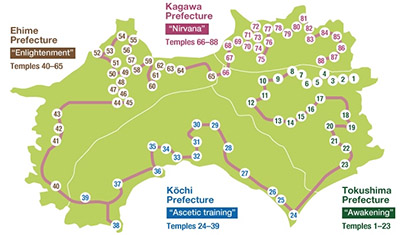
They describe their summer pilgrimages as a counterbalance to the demands of daily life — a restructuring of their spiritual practice that helps them feel peaceful and spacious. “As much as it is about moving through the world,” Morehead says, “pilgrimage is about the internal landscape.”
As for the CA Spanish students who are soon to depart for Galicia, they recently completed a mini-pilgrimage in Concord — a two-hour walk to Reflection Circle in the Emerson Amble — in anticipation of their journey. “It was a nice taste of things to come,” Bailey says.
Related Story
Read about CA alumnae/i pilgrimage experiences in the spring 2019 CA Magazine cover story, “The Modern Pilgrim’s Way.”

